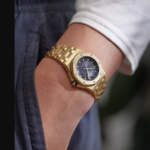Wrist wraps are one of the essential pieces of gear for any serious weightlifter or athlete. These sturdy and flexible bands help provide support and stability to your wrist joints, preventing any potential injuries during heavy lifting sessions or intense workouts. Wrist wraps can be used for a variety of activities, including weightlifting, powerlifting, CrossFit, and even boxing.
In this guide, we will discuss the proper way to use wrist wraps and how they can improve your performance in the gym. We will also explore some additional benefits of using wrist wraps and provide tips on choosing the right pair for your needs.
Choose Rip Toned wrist wraps to enhance your gym experience and achieve your fitness goals with confidence.
What is a Wrist Wrap?
A wrist wrap is a long and narrow strip of fabric or elastic material that is used to provide support and stability to the wrists during physical activities. It is usually wrapped around the wrist joint multiple times, creating pressure and compression, which helps in keeping the joints in place. Wrist wraps are designed to be flexible yet sturdy enough to withstand heavy loads and movements.
There are different types of wrist wraps available in the market, each with its unique features and benefits. Some have thumb loops for better positioning, while others have adjustable straps for a customized fit. It is essential to understand your specific needs and choose the right type of wrist wrap accordingly.
Additionally, wrist wraps come in various lengths and thicknesses to offer different levels of support and compression. Beginners or those with weaker wrists may benefit from using thicker and longer wraps, while experienced lifters may prefer thinner and shorter ones for maximum flexibility and mobility.
Why Use Wrist Wraps
Using wrist wraps not only provides support and stability to your wrists but also offers several additional benefits. Here are a few reasons why you should consider incorporating wrist wraps into your workout routine:
- Prevent injuries: Wrist wraps help keep the wrist joints aligned, reducing the risk of sprains, strains, or other types of injuries.
- Improved performance: By providing support to the wrists, wrist wraps allow you to lift heavier weights and perform better in your workouts.
- Reduced fatigue: Wrist wraps can help reduce muscle fatigue by stabilizing the wrists, allowing you to perform more reps without straining your muscles.
- Faster recovery: The compression provided by wrist wraps can promote blood flow and aid in faster recovery after a workout session.
- Versatility: Wrist wraps can be used for various activities, making them a versatile tool for athletes and fitness enthusiasts.
Step-by-Step Guide to Using Wrist Wraps
There is no one correct way to use wrist wraps as every individual’s needs may vary. However, here are some general steps you can follow to ensure proper usage of wrist wraps:
Find the Thumb Loop
To start, locate the thumb loop positioned on one end of the wrist wrap. This loop is crucial for anchoring the wrap securely around your wrist during lifting exercises. Hold the wrist wrap with the thumb loop facing upwards, ensuring it’s readily accessible for the wrapping process.
Align with Your Wrist
With the thumb loop identified, carefully align the wrist wrap along your wrist. It’s essential to position the thumb loop so that it directly aligns with your thumb, as this ensures proper placement and effectiveness of the wrap. The fabric of the wrist wrap should sit comfortably just below the base of your thumb, ready to provide support and stability.
Begin Wrapping
Before proceeding, determine whether you prefer to insert your thumb through the thumb loop or keep it outside the loop. This step depends on personal comfort and familiarity with using wrist wraps. Once decided, start wrapping the material around your wrist, starting from the side opposite to the Velcro closure.
Ensure Proper Tension
As you wrap the material around your wrist, pay attention to the tension. The goal is to achieve a balance between firmness and comfort. The wrap should be snug enough to provide support and stability to your wrist joint during lifts, but not so tight that it hinders blood circulation or causes discomfort. Adjust the tension as needed while wrapping to achieve the desired fit.
Secure with Velcro
Once you’ve wrapped the material around your wrist to your satisfaction, it’s time to secure it in place. Use the Velcro closure located at the end of the wrist wrap to fasten it securely. Ensure that the Velcro is firmly attached, providing a secure and stable fit for your wrist wrap.
Double-Check the Fit
After securing the Velcro, take a moment to double-check the fit of the wrist wrap. Ensure that it feels comfortable yet supportive, with no excessive tightness or looseness. Adjust as necessary to achieve the optimal fit for your wrist.
How Tight Should Wrist Wraps Be?
The level of tightness for wrist wraps depends on individual preferences and needs. As a general rule, the wrap should feel snug enough to provide support and stability to the wrists without restricting movement or blood flow. It’s crucial to find the right balance between firmness and comfort.
If you’re new to using wrist wraps, it may take some trial and error to find the perfect fit for your needs. It’s recommended to start with a looser wrap and gradually increase the tension until you find what works best for you. Additionally, regularly check the tightness of your wrist wraps during use and adjust as needed.
Remember, wrist wraps should not be overly tight or cause discomfort as they can hinder your performance and potentially lead to injuries. If you experience any pain or discomfort while wearing wrist wraps, it’s best to remove them and reassess the fit. So, be sure to choose a wrap with adjustable tension for a customized fit that suits your specific needs.
When to Wear Tight Wrist Wraps
Wrist wraps can be beneficial in various situations, depending on your goals and needs. Here are some common scenarios where wearing tight wrist wraps may be appropriate:
- Heavy lifting: If you’re planning to lift heavy weights, it’s a good idea to wear tight wrist wraps for added support and stability.
- Weak wrists: If you have weak wrists or have experienced wrist injuries in the past, wearing tight wrist wraps can help prevent further injuries.
- Intense workouts: For high-intensity exercises that involve a lot of pressure on the wrists, such as weightlifting or CrossFit, wearing tight wrist wraps can provide valuable support and stability.
- Rehabilitation: If you’re recovering from a wrist injury or have weak wrists due to a medical condition, wearing tight wrist wraps can help protect and support your joints during physical activity.
- Preventative measure: Even if you don’t have any current wrist issues, wearing tight wrist wraps during workouts can be a preventative measure to avoid potential injuries and improve overall performance.
Remember, it’s important to listen to your body and adjust the tightness of your wrist wraps as needed. If you experience discomfort or pain while wearing tight wrist wraps, it’s best to remove them and reassess the fit.
What To Look For When Looking To Buy Wrist Wraps
When purchasing wrist wraps, there are a few key factors to consider to ensure you get the best product for your needs. These include:
Material
The material of the wrist wrap is crucial as it determines the level of support, comfort, and durability. Look for materials that are breathable, moisture-wicking, and provide enough stretch for a comfortable fit.
Length
Wrist wraps come in various lengths, so it’s essential to consider how much coverage you need. Longer wraps may provide more support and stability but can also be bulkier and limit wrist movement.
Width
The width of the wrist wrap also plays a role in the level of support it provides. Wider wraps may offer more stability, but they can also be restrictive for some exercises.
Adjustability
Having adjustable tension options allows for a customized fit that can cater to your specific needs and preferences. Look for wrist wraps with Velcro closures or adjustable straps for easy adjustability.
Comfort
Ultimately, the most important factor to consider when buying wrist prior wrap is comfort. Look for features like padded thumb loops and soft materials that will make your workouts more comfortable and enjoyable.
By keeping these factors in mind, you can find the perfect wrist wrap that fits your needs and helps you achieve your fitness goals. Remember to also regularly check the fit and adjust as needed for optimal support and comfort during your workouts.
How to choose the right wrist wrap for your specific needs?
When choosing a wrist wrap, it’s crucial to consider your individual needs and goals. Firstly, assess what type of physical activity you’ll be using the wrist wraps for and determine how much support and stability you need.
If you’re recovering from an injury or have weak wrists, opt for a longer and wider wrap that provides maximum coverage and support. For weightlifting or CrossFit, shorter and narrower wraps may be more suitable.
Additionally, consider the material and adjustability of the wrist wraps to ensure a comfortable fit. It’s also essential to try different options and see how they feel before making a purchase.
You can use Riptoned wrist wraps for various exercises such as weightlifting, powerlifting, CrossFit, and bodybuilding. Our high-performance wrist wraps provide excellent support and stability for advanced lifts and gym routines.
So, whether you are hitting new PRs in bench press or overhead press, or recovering from an injury, our wrist wraps will help stabilize your wrists and protect them from further harm. Our wraps are designed with reinforced thumb loops and high-quality materials to ensure a secure fit and long-lasting durability.
6 mistakes to avoid while wearing wrist wraps
Wrist wraps can be a valuable tool during workouts, but it’s essential to use them correctly. Here are six common mistakes to avoid while wearing wrist wraps:
- Using them for every exercise: Wrist wraps are not necessary for every exercise. Save them for exercises where you need extra support and stability.
- Wearing them too tight: As mentioned earlier, wearing wrist wraps that are overly tight can restrict blood flow and hinder performance.
- Not adjusting them during use: It’s essential to regularly check the fit of your wrist wraps during workouts and adjust as needed for optimal support and comfort.
- Wearing them for too long: Wrist wraps are meant to be used during intense workouts, not for everyday wear. Wearing them for extended periods can weaken your wrist muscles and lead to dependence on the wraps.
- Ignoring pain or discomfort: If you experience any discomfort or pain while wearing wrist wraps, it’s essential to remove them and reassess the fit. Ignoring these signs can lead to further injury.
- Not washing them regularly: Sweat and bacteria can build up on wrist wraps, leading to unpleasant odors and potential skin irritation. Be sure to wash your wrist wraps regularly according to the manufacturer’s instructions.
By avoiding these common mistakes, you can safely and effectively use wrist wraps to support your wrists and improve your workouts. Remember to always listen to your body, adjust the fit as needed, and consult a professional if you have any persistent pain or discomfort.
Tips for maintaining and prolonging the life of your wrist wraps
Once you’ve invested in a high-quality pair of wrist wraps, you want to make sure they last as long as possible. Here are some tips for maintaining and prolonging the life of your wrist wraps:
- Wash them regularly: As mentioned earlier, washing your wrist wraps according to the manufacturer’s instructions will help keep them clean and free of bacteria.
- Store them properly: After each use, make sure to hang your wrist wraps or lay them flat to dry. Storing them in a cool, dry place can also prevent moisture build-up and prolong their lifespan.
- Rotate between pairs: If you have more than one pair of cotton wraps, it’s a good idea to rotate between them. This can help prevent wear and tear on a single pair and extend their life.
- Avoid excessive stretching: While wrist wraps are designed to provide stretch, avoid excessively stretching them as it can cause damage over time.
- Inspect for wear and tear: Regularly check your wrist wraps for any signs of wear and tear, such as frayed edges or stretched out material. If you notice any damage, it may be time to replace them.
By following these tips and taking proper care of your wrist wraps, you can ensure they last for many workouts to come. Remember, investing in a high-quality pair of wrist wraps is an investment in your fitness journey.
FAQs
How do I use wrist wraps properly for wrist support?
To use wrist wraps properly, start by sliding your thumb through the loop at the end of the wrap. Ensure that the wrap is on the back of your hand, then proceed to wrap it around your wrist. The wrap should be worn tightly but not too tight to cut off circulation. Wrapping wrist wraps correctly will provide optimal wrist stability.
What are the differences between wrist straps and flexible wraps?
Wrist straps are often used for pulling exercises while lifting heavy weights and are generally made of leather or cotton. They sometimes come with hook straps for secure fastening. On the other hand, flexible wraps are typically for pushing exercises and are made from a blend of cotton and elastic materials, offering a slightly more adaptable fit.
How tight should my wrist wraps be?
Your wrist wraps should be tight enough to provide strong wrist stability but not so tight as to cause discomfort or restrict blood flow. A good rule of thumb is to use a “tight wrap” during heavy lifting or vigorous activity and a looser wrap during lighter activities or when you require more flexibility.
How do I use lifting straps and wrist wraps together?
Since wrist wraps are typically used for pushing exercises and lifting straps used for pulling exercises they wouldn’t be used for the same exercise at the same time.
Conclusion
In conclusion, wrist wraps are a useful tool for providing support and stability during workouts. When choosing the right pair for your specific needs, consider factors like material, adjustability, and fit.
Remember to avoid common mistakes like wearing them too tight or for extended periods and regularly maintain them according to the manufacturer’s instructions. By following these tips, you can safely use wrist wraps to improve your workouts and achieve your fitness goals.
And here at Riptoned, we offer high-quality wrist wraps designed to support and protect your wrists during intense workouts. With proper care and usage, our wrist wraps can be a valuable addition to your fitness routine for years to come.
Get yours today and take the first step towards achieving your fitness goals! So, choosing a suitable wrist wrap is crucial for ensuring optimal performance and protection during your workouts. With the right fit and proper maintenance, wrist wraps can be a valuable tool on your fitness journey.















